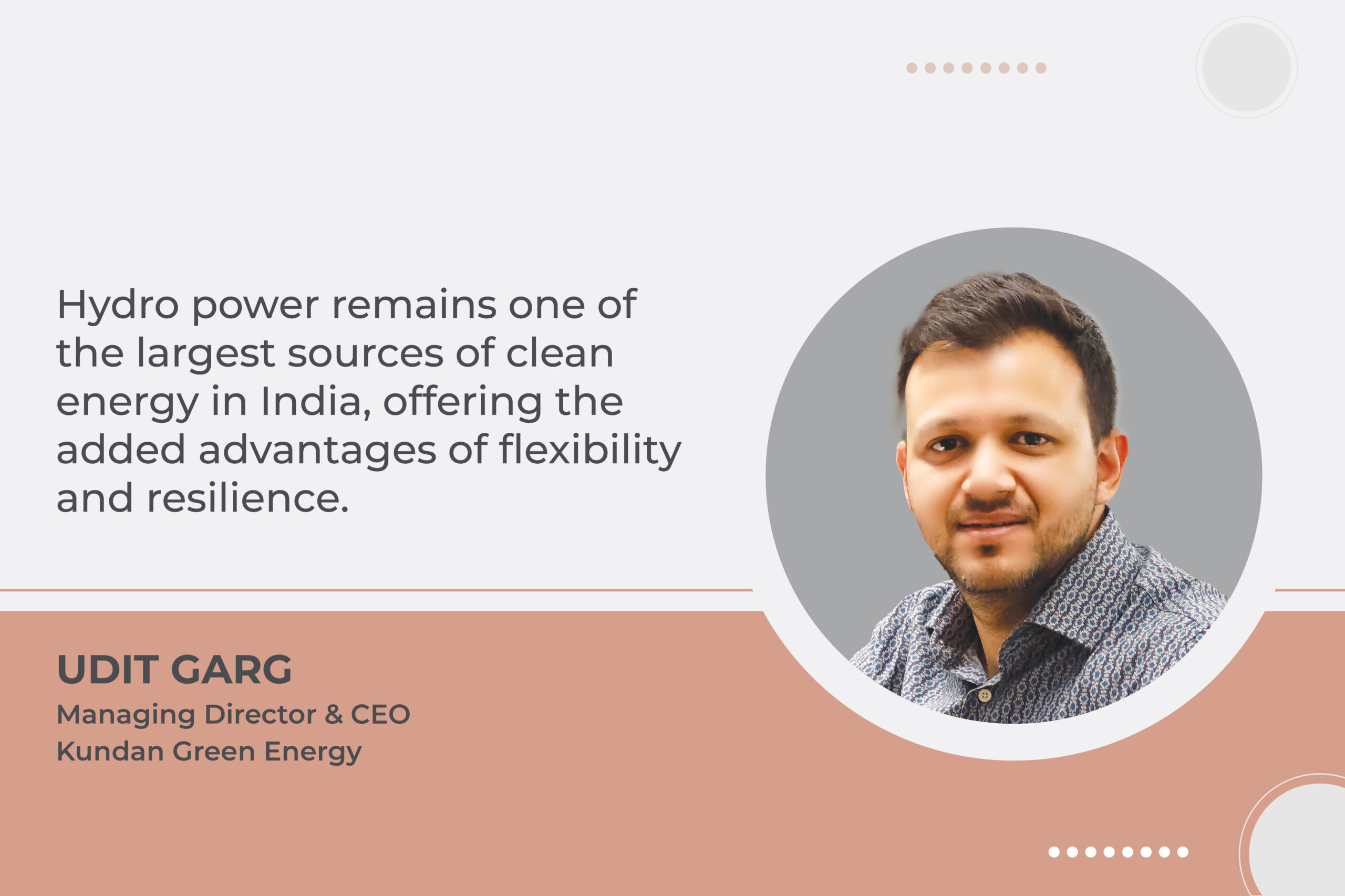Pumped hydro gains momentum in clean energy transition
By Staff Report September 24, 2025 7:41 pm IST
By Staff Report September 24, 2025 7:41 pm IST

By 2030, the year India targets 500 GW of non-fossil fuel capacity, hydro power will be the primary back-up and storage source for peak load management through pumped storage schemes.
Small hydro power is emerging as a key pillar in India’s clean energy transition, particularly in rural and remote regions. Beyond delivering affordable, non-polluting electricity, it strengthens grid reliability, supports rural development, and enhances energy security. With pumped storage, hydroelectric power is poised to play a pivotal role in meeting the 2030 and 2070 targets. Let us know more from Udit Garg.
How are small hydropower projects contributing to rural electrification and energy access in hilly or remote regions? What infrastructure challenges are hindering hydro expansion?
Small hydroelectric projects are playing a crucial role in the nation’s rural electrification drive, particularly in hilly and remote regions. By utilising water from local streams, these projects offer a clean, non-polluting, and affordable supply of power for households, schools, health centres, and small businesses as well. Going beyond simple power supply, they also create additional economic and social benefits. They aid in improving living conditions, creating employment, and reducing fossil fuel consumption.
Despite this, the expansion of hydroelectric power faces a few infrastructure challenges. Logistical constraints, high upfront costs for equipment, and delays in getting clearances all lead to slow project development in remote areas. Additionally, the lack of transmission facilities and obstacles posed by financial arrangements present a further challenge. Suppose they can be resolved through better policies, more investment in rural infrastructure, and quicker approval procedures. In that case, there is every reason to believe that small hydropower will fully utilise its potential and contribute to carrying clean energy forward in the country’s rural development.
How significant is hydropower in India’s clean energy mix today, and what role will it play in achieving 2030 and 2070 targets?
Hydro power remains one of the largest sources of clean energy in India, offering the added advantages of flexibility and resilience. Unlike variability generators such as solar and wind energy, hydro power offers a firm electricity supply, supporting grid stability and reliability, making it critical as India hastens its transition to renewables. Hydro power currently accounts for a significant percentage of installed renewable energy capacity and is essential for balancing variable renewable energy sources into the grid.Its relevance will only intensify in the years to come. By 2030, the year India targets 500 GW of non-fossil fuel capacity, hydro power will be the primary back-up and storage source for peak load management through pumped storage schemes. With the ability to supply base load as well as balance power, it is well-positioned to support the growth of solar and wind energy. Along the way to 2070 net-zero, hydro power will be at the forefront, not just as a clean source of energy, but also as a source of energy security, rural electrification, and resilience against climate variability.
As pumped storage hydropower gains traction, what role will it play in balancing intermittent renewable energy sources on the grid?
Pumped storage hydropower is rapidly emerging as a critical enabler for the clean energy future. As the share of solar and wind rises, the grid is increasingly faced with issues of variability and intermittency. Pumped storage provides a solution to reliability by storing surplus power generated during off-peak hours and releasing it during peak demand, essentially acting as a giga-scale natural battery.
Its dual role in balancing renewables is to first deliver grid stability in terms of swift response to variations, and second, provide long-duration storage capacity. While battery storage is growing rapidly, pumped storage is the most promising large-scale, long-duration solution to complement it at present. With the country’s ambitious target of 500 GW of non-fossil fuel capacity by 2030 approaching, pumped storage will play a crucial role in managing peak loads, integrating renewables around the clock, and maintaining a continuous supply.
******************
We use cookies to personalize your experience. By continuing to visit this website you agree to our Terms & Conditions, Privacy Policy and Cookie Policy.